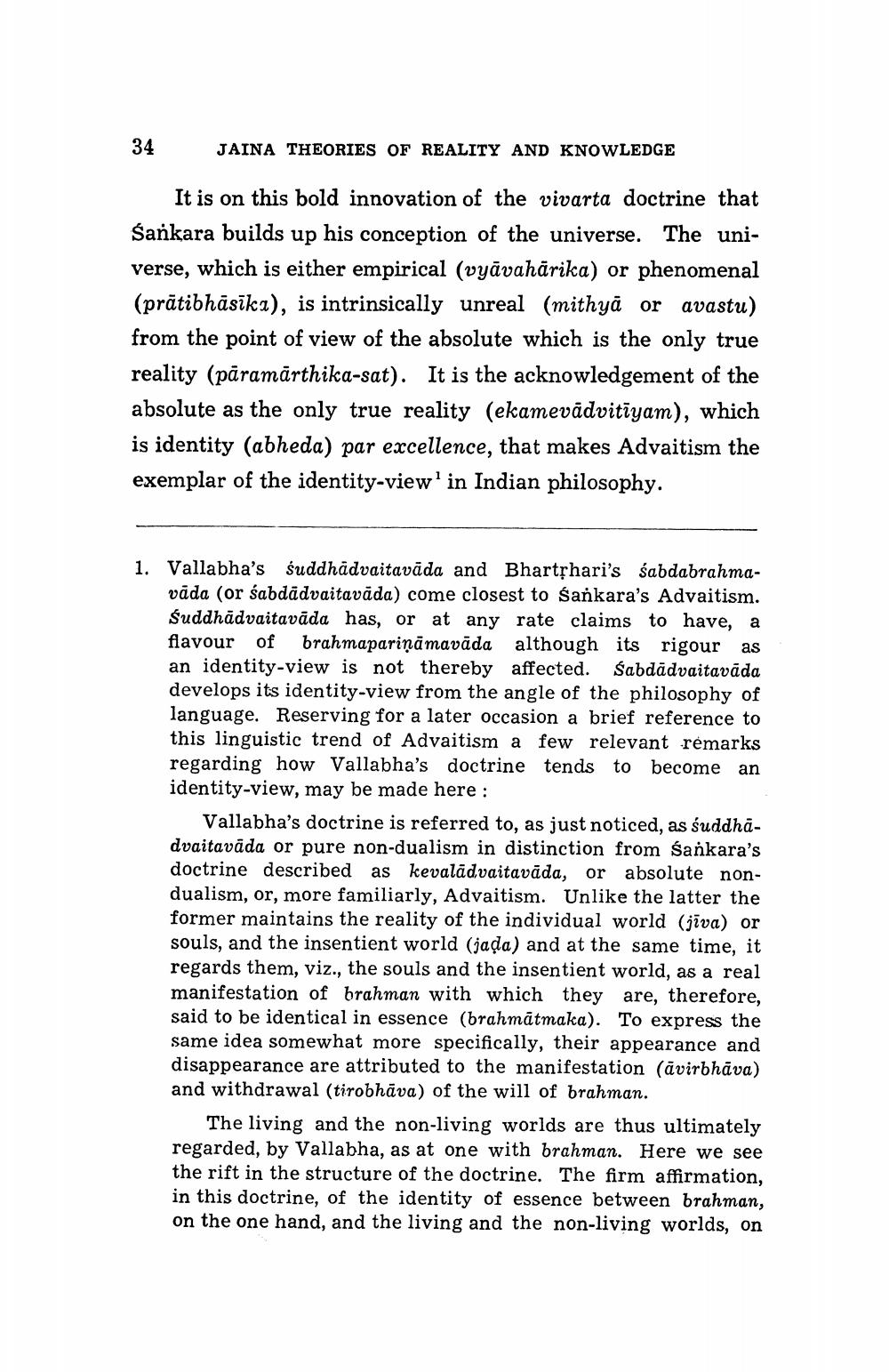________________
34
JAINA THEORIES OF REALITY AND KNOWLEDGE
It is on this bold innovation of the vivarta doctrine that Śankara builds up his conception of the universe. The universe, which is either empirical (vyāvahārika) or phenomenal (prātibhāsīka), is intrinsically unreal (mithyā or avastu) from the point of view of the absolute which is the only true reality (pāramārthika-sat). It is the acknowledgement of the absolute as the only true reality (ekamevādvitīyam), which is identity (abheda) par excellence, that makes Advaitism the exemplar of the identity-view' in Indian philosophy.
1. Vallabha's suddhadvaitavāda and Bhartshari's sabdabrahma
vada (or śabdădvaitavāda) come closest to śankara's Advaitism. śuddhădvaitavāda has, or at any rate claims to have, a flavour of brahmapariņāmavāda although its rigour as an identity-view is not thereby affected. Sabdādvaitavāda develops its identity-view from the angle of the philosophy of language. Reserving for a later occasion a brief reference to this linguistic trend of Advaitism a few relevant remarks regarding how Vallabha's doctrine tends to become an identity-view, may be made here :
Vallabha's doctrine is referred to, as just noticed, as śuddhadvaitavāda or pure non-dualism in distinction from śankara's doctrine described as kevaladvaitavāda, or absolute nondualism, or, more familiarly, Advaitism. Unlike the latter the former maintains the reality of the individual world (jiva) or souls, and the insentient world (jada) and at the same time, it regards them, viz., the souls and the insentient world, as a real manifestation of brahman with which they are, therefore, said to be identical in essence (brahmātmaka). To express the same idea somewhat more specifically, their appearance and disappearance are attributed to the manifestation (ävirbhāva) and withdrawal (tirobhāva) of the will of brahman.
The living and the non-living worlds are thus ultimately regarded, by Vallabha, as at one with brahman. Here we see the rift in the structure of the doctrine. The firm affirmation, in this doctrine, of the identity of essence between brahman, on the one hand, and the living and the non-living worlds, on




